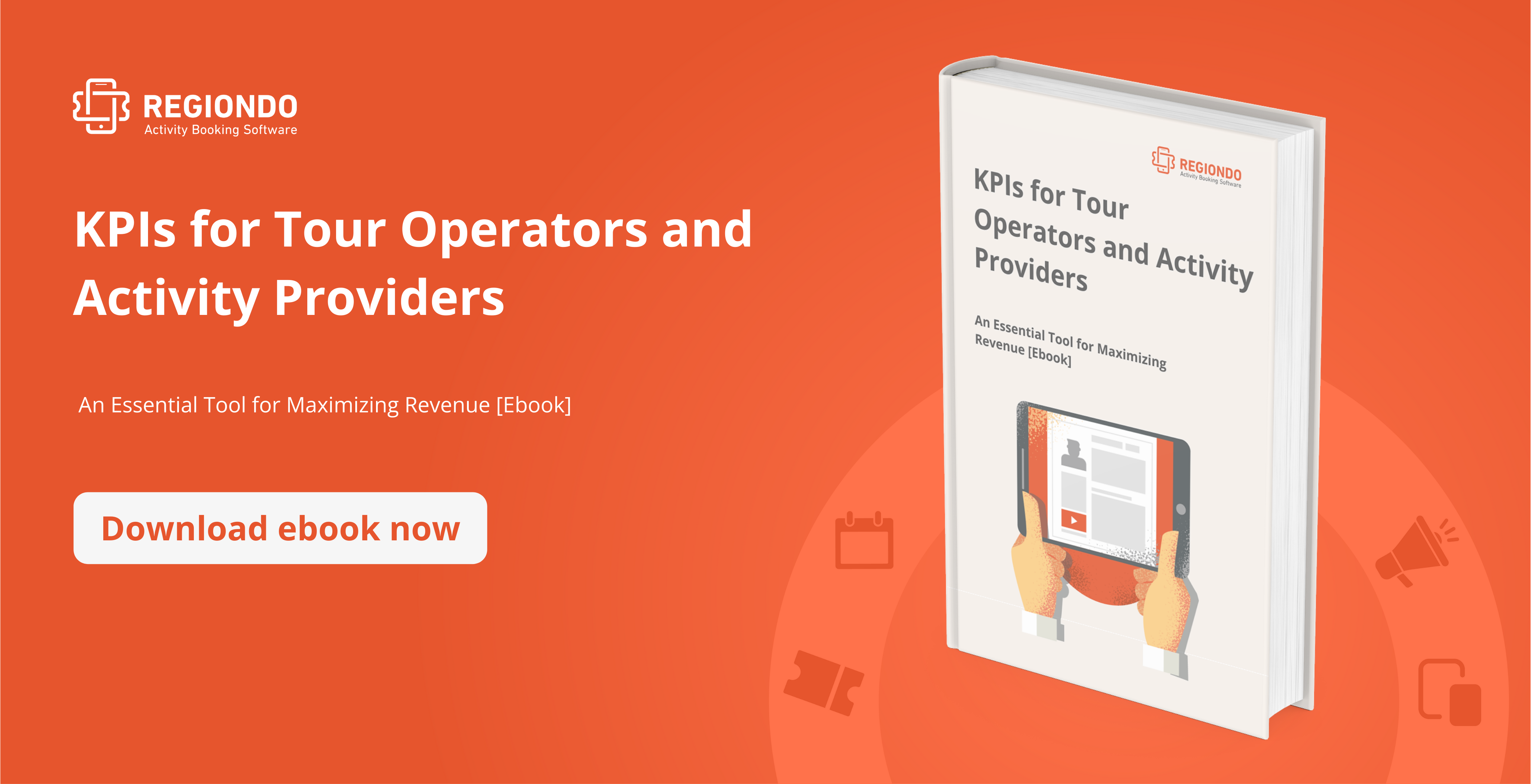According to the popular saying, the pen is mightier than the sword, meaning that the written word is the most effective tool at our disposal to educate, inspire, and persuade others. Not even the threat of physical violence can compete with such a powerful weapon. For tour operators and activity providers, the ability to craft a compelling description of their products can be the difference between a booked experience and a missed opportunity. Behind every ticket sold lies a fascinating story that not only informs, but intrigues and engages potential customers.
This guide will show you how to write the perfect description for tours and activities. Remember, merely describing the main features of your experiences is not nearly enough to capture the attention of your website visitors. From understanding the nuances of your target market to using storytelling techniques that bring their experiences to life, we will walk you through every step of creating a description that converts.
Thanks to Regiondo’s Booking Widget, displaying the descriptions of your tours and activities on your website will be easier than ever. To learn more about our all-in-one reservation software, click here.

Understand your Audience
The foundation of any compelling tour or activity description begins with a deep understanding of your audience: in other words, knowing who you are writing for is just as important as knowing what you are writing about.
Identify your target audience – The first step is to clearly define who your ideal customers are by considering factors such as age, interests, travel preferences, and budget. Are your experiences tailored to adventure-seeking millennials, luxury-oriented baby boomers, or families looking for educational yet fun activities? Understanding these demographics will help you craft a message that resonates. Last but not least, consider leveraging tools like Google Analytics to gain deeper insights into the audience your site is currently attracting.
Tailor your language and content to your audience – Once you know who your audience is, adapt your language and content to their preferences. For example, a younger audience may appreciate a casual, energetic tone, while a more mature audience may prefer detailed, in-depth descriptions. Don’t forget that your choice of words can either win your audience over or alienate them.

Address needs instead of listing features – Contrary to what we like to think, humans are emotional creatures, not logical ones: in fact, we resonate far more with stories than with raw facts. For this reason, a sterile collection of features and characteristics won’t make a good description of your tours and activities. Remember that each tourist is looking for something different from their trip, whether it is relaxation, escapism, or adventure. Your description should address these desires and highlight the unique aspects of your experience that meet them.
Be inclusive – In today’s global marketplace, being culturally sensitive and inclusive is essential, not to mention good for your bottom line. A Facebook survey shows that customers are more loyal to brands that embrace diversity and inclusion in their advertising campaigns (59% of respondents). For this reason, make sure your descriptions are respectful and considerate of different cultures, backgrounds, and abilities. This will broaden your appeal and also reflect a more modern, empathetic approach to business.

The Essentials of a Great Description for Tours and Activities
Writing an effective tour and activity description requires a blend of clarity, accuracy, and emotional appeal. As mentioned above, your goal should be to turn a simple narrative into an irresistible invitation, because simply listing a bunch of features won’t cut it. For best results, follow these simple tips.
Be concise – While details are necessary, overly long descriptions can lose the reader’s interest. Unfortunately, in the digital age, the average attention span is only 8,25 seconds. That’s why you need to strike a balance between providing enough information to engage and inform, but not so much as to overwhelm.
Be clear – Your audience should be able to quickly understand what the experience entails and what makes it unique. The trick is to avoid industry jargon or overly complex language.

Appeal to emotions – Use emotional language to tap into your audience’s feelings and desires. Describe the sense of adventure, the awe of natural beauty, or the thrill of learning something new.
Highlight unique features – Whether it’s a rare sightseeing location, an interaction with local culture, or a unique approach to a common activity, emphasize what makes your experience different.
End your description with a strong call to action – Encourage the reader to take the next step, whether it’s booking the experience, contacting you for more information, or visiting your website for more details. The ideal call to action should be clear, concise and visible. In our opinion, nothing beats a bright “Book Now” button that links to a page where customers can complete their purchase.
With Regiondo’s Booking Widget you can create an effective call to action that will turn lookers into bookers in no time. Find out more by clicking here.
Storytelling in Tour and Activity Descriptions
Storytelling is a powerful tool for transforming standard descriptions into compelling narratives that engage prospects. Not surprisingly, recent studies show that storytelling makes customers more likely to buy your product and can increase conversion rates by up to 30%.
Let’s take a look at some of the elements you need to consider to turn your tour or activity description into a powerful story.
Focus on the experience – Begin by framing your experience as a story. This doesn’t mean making up details, but presenting them in a way that follows a narrative structure. First, set the scene by describing the setting or background of the experience. Then introduce the “characters,” whether they are guides, locals, or the participants themselves. Finally, build to the climax, which could be the main event or a special aspect of the experience you’re offering.
Use vivid imagery and sensory details – Describe what participants will see, hear, smell, touch and taste during the experience. For example, instead of just mentioning a visit to the beach, describe the feeling of warm sand underfoot, the sound of crashing waves, and the smell of salt in the air. These sensory descriptions can make your story more relatable and immersive.

Build an emotional connection – This can be achieved by highlighting the emotional rewards of the experience, such as the joy of discovery, the thrill of adventure, or the peace of quiet nature. Connecting on an emotional level can be a powerful motivator for bookings.
Include real-life testimonials – Including snippets of testimonials or real stories from past participants can add authenticity and relatability to your descriptions. When prospects read about others’ positive experiences, it builds trust and helps them see themselves in a similar scenario.

Practical Writing Tips for Tour and Activity Descriptions
When it comes to storytelling, form is just as important as content, and even if your goal isn’t to win the Pulitzer Prize for Fiction, you should curate the style of your writing. Luckily, we have a few tips to help you take your descriptions to the next level.
Use active voice – Active voice makes your writing more direct and dynamic: it puts the topic first, so that your descriptions are more convincing and easier to read. To give you an example, instead of saying “The tour will be led by experienced guides,” say “Experienced guides will lead the tour”.
Write a strong opening sentence – The first sentence of your description is crucial – as the saying goes, you only get one chance to make a first impression. Keep it intriguing, exciting, or evocative to immediately grab the reader’s attention.
Use bullet points and headings – Bullet points and headings make your tour or activity description easier to read and understand. In particular, bullet points are a great way to present key features in an easy-to-scan format, while headings can guide the reader through different sections of your description, which is especially beneficial for longer, more detailed narratives.

Keep it simple – The readability of your descriptions is essential, especially considering that your audience may span different ages and backgrounds. Therefore, avoid confusing them with convoluted sentences or by using industry jargon.
Be consistent – Maintaining the same tone and style throughout your description will help build a recognizable brand voice. Whether you choose a formal, informative tone or a casual, friendly style, make sure it fits your brand and is consistent across all of your communications.
Proofread and edit – Grammar, spelling, and punctuation errors can detract from your professionalism and credibility. It’s also helpful to have someone else review your content, as a fresh set of eyes can catch mistakes you may have overlooked.
Thanks to Regiondo’s editor, you can format the description of your experiences to make them look both modern and professional. Find out more by clicking here.

SEO (Search Engines Optimization) Tips for Tour and Activity Descriptions
Ranking highly for relevant keywords on Google and Bing is a powerful sales driver. In fact, SEO is the most powerful yet cost-effective way to improve your visibility. After all, in 9 out of 10 cases, the journey that leads to an online purchase begins with a simple query on a search engine. Let’s explore a few ways to make the description of your tours and activities more SEO friendly.
Include relevant keywords – Identify and incorporate keywords that potential customers are likely to use when searching for experiences like yours. They should be relevant to your tour or activity and used naturally in your description. Keep in mind that keyword stuffing (the excessive use of the same keyword over and over again within a page) makes your content less readable and can negatively impact your search engine rankings. Pro tip: Tools like Google Keyword Planner can help you find the right keywords for your content.
Write SEO-friendly titles and meta descriptions – Create titles and meta descriptions that are not only SEO friendly, but also appealing to your potential customers. The title should be concise and include your main keyword, while the meta description should provide a brief and enticing summary of the experience, encouraging users to click through to your site.
Use alt text for images – Alt text, as the name suggests, is a brief description of a picture. It may seem minor, but alt text allows visually impaired users who are using a screen reader to understand what an image is about, greatly improving their user experience. At the same time, they also allow search engines to better index your images, which benefits your ranking.
Optimize for mobile – With the increasing use of smartphones for travel research and booking (64% of searches are done from a phone!), you need to ensure that your product pages are mobile friendly, an element that has a significant impact on SEO rankings. This means having a website with a responsive layout that adapts to different screen sizes so users can easily navigate regardless of the device they’re browsing on.
Leverage local SEO – If your experience is location-specific, local SEO is essential. This means optimizing for location-based keywords and making sure your business is listed and accurately represented on maps and local directories.
Monitor and update constantly – SEO is not a one-time effort. Continually monitor your website’s performance using tools such as Google Analytics and update your content as needed.
The Regiondo Booking Widget is developed in React, a modern technology that guarantees extremely fast loading times, a key factor to improve your SEO ranking.

The Role of Photos and Videos in Tour and Activity Descriptions
“A picture is worth a thousand words,” and that’s even more true when it comes to travel experiences. Photos and videos play a critical role in complementing your written content, making it more engaging and effective.
- Use high-quality images – When it comes to images, quality matters. High-resolution, professionally shot photos greatly enhance the appeal of your experience.
- Don’t forget to include videos – According to recent statistics, websites that include video have nearly double the conversion rate of those that don’t. They allow potential customers to immerse themselves in the experience before they even book, encouraging them to proceed with the purchase.
- Leverage user-generated content – User-generated content, such as photos and videos from past attendees, is perceived as authentic and trustworthy, providing a real-life glimpse into the experiences of actual customers.
- Update and refresh regularly – Update your visuals regularly to keep your content fresh and relevant. This is especially important for experiences that are seasonal or have undergone changes.

Conclusion
As we conclude our exploration of how to write the perfect description for your tours and activities, it’s clear that this process is both an art and a science. From understanding your audience to employing storytelling techniques, optimizing for SEO, and using compelling visuals, each element plays a critical role in creating descriptions that not only inform, but also inspire and persuade.
To learn more about Regiondo, the leading booking system for the leisure industry, request a free demo with one of our consultants.







